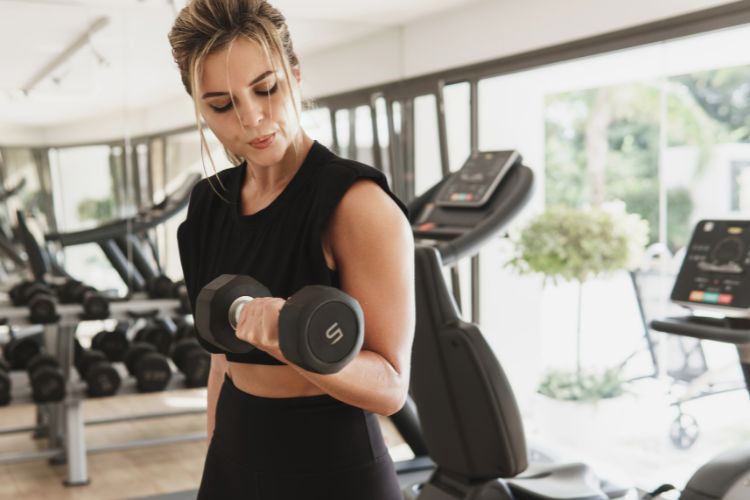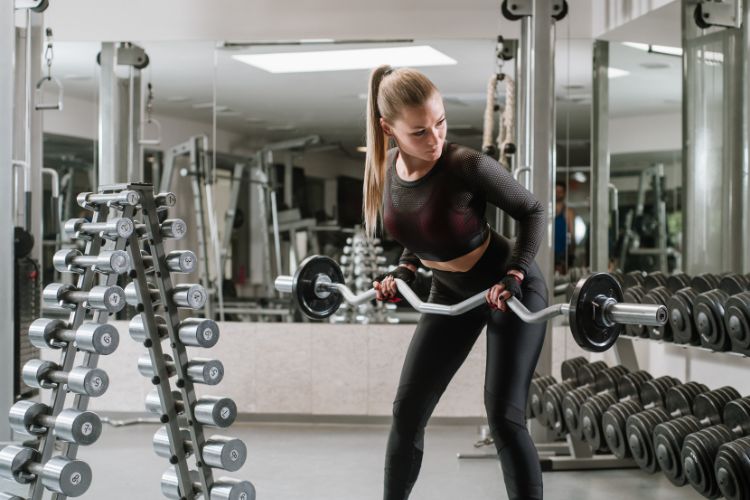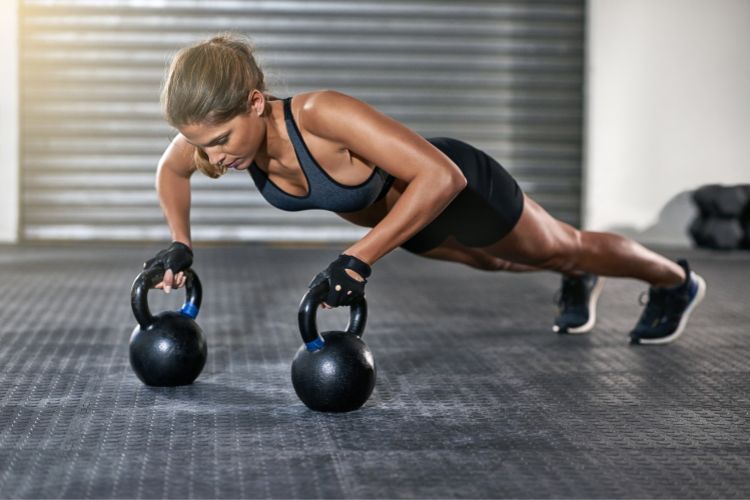Sign up for workout ideas, training advice, reviews of the latest gear and more.






Mountain climbers are one of the most effective and versatile exercises you can incorporate into your fitness routine, especially as a beginner. They require no equipment, target multiple muscle groups, and provide both strength and cardiovascular benefits. This blog post will dive into the details of mountain climbers, their benefits, variations, and how beginners can incorporate them into a workout regimen.
Mountain climbers are a dynamic bodyweight exercise that simulates the motion of climbing a mountain, hence the name. The exercise involves bringing your knees towards your chest in a plank position, alternating between legs in a rapid, controlled manner. It’s a full-body workout that engages the core, shoulders, arms, and legs while also providing a significant cardiovascular challenge.
To perform a standard mountain climber:
Mountain climbers offer a range of benefits that make them an excellent choice for beginners looking to build strength, endurance, and overall fitness.
One of the primary advantages of mountain climbers is that they work multiple muscle groups simultaneously. When performing mountain climbers, you’re engaging your:
Mountain climbers are not just a strength exercise; they also offer a great cardio workout. The quick, continuous movement increases your heart rate, helping to improve cardiovascular endurance. This makes mountain climbers an effective way to burn calories and enhance overall fitness.
As a beginner, developing coordination and agility is crucial. The alternating leg motion in mountain climbers helps improve these skills, making it easier to transition into more complex exercises as you progress in your fitness journey.
Mountain climbers can be done anywhere, anytime, without the need for equipment. This makes them an ideal exercise for beginners who may not have access to a gym or prefer working out at home. Their versatility allows you to incorporate them into various workout routines, from HIIT to strength training.
For beginners concerned about joint health, mountain climbers can be modified to be a low-impact exercise. By slowing down the movement and focusing on controlled motions, you can reduce the impact on your joints while still reaping the benefits of the exercise.
As a beginner, it’s important to start slowly and build up your strength and endurance. Here’s how you can incorporate mountain climbers into your workout routine:
Before jumping into mountain climbers, ensure you’re properly warmed up. A five to ten-minute warm-up that includes dynamic stretching and light cardio will help prepare your muscles and joints for the exercise.
Begin by mastering the basic mountain climber movement. Start slowly, focusing on form rather than speed. Aim for 10-15 seconds of continuous mountain climbers, followed by a short rest. Gradually increase the duration as you become more comfortable with the exercise.
Beginners Mountain climbers are perfect for circuit training. Combine them with other bodyweight exercises such as squats, push-ups, and lunges for a full-body workout. For example, a simple beginner circuit could include:
Repeat the circuit 3-4 times with a short rest between each round.
As you become more comfortable with the standard mountain climber, you can start incorporating variations to keep your workouts challenging and engaging.
Introducing variations of mountain climbers can add new challenges and target different muscle groups, keeping your workout routine fresh and effective.
If you’re just starting out or want to focus on building strength, try slow mountain climbers. Instead of rapidly alternating your legs, move slowly and deliberately, holding each knee at your chest for a brief moment before switching legs. This variation increases the time under tension for your muscles, especially your core.
Cross-body beginners mountain climbers add an extra challenge for your obliques. Instead of bringing your knee straight towards your chest, drive it diagonally towards the opposite elbow. This movement engages the obliques more intensely, helping to tone the sides of your abdomen.
Performing mountain climbers with your hands on an elevated surface, such as a bench or step, reduces the intensity of the exercise. This is a great option for beginners who may struggle with maintaining a plank position on the floor. As you gain strength and confidence, you can gradually lower the elevation until you’re able to perform the exercise on the ground.
Spider mountain climbers involve bringing your knee to the outside of your elbow instead of directly underneath your body. This variation increases the challenge for your core and hip flexors, enhancing mobility and flexibility.
Combine the benefits of plank jacks and mountain climbers for an intense cardio and strength challenge. Begin in a plank position, then jump your feet out and in (like a jumping jack), followed by a mountain climber motion. This variation elevates your heart rate and engages multiple muscle groups simultaneously.
While mountain climbers are relatively simple, beginners often make some common mistakes that can reduce the effectiveness of the exercise or lead to injury. Here’s what to watch out for:
Maintaining a proper plank position is crucial when performing mountain climbers. Ensure that your body forms a straight line from your head to your heels, with your core engaged. Avoid letting your hips sag or pike up, as this can strain your lower back and reduce the effectiveness of the exercise.
Beginners often feel the need to move as quickly as possible during mountain climbers. However, speed should not come at the expense of form. Focus on controlled, deliberate movements, ensuring that each knee drive is strong and stable. As you build strength and confidence, you can gradually increase your speed.
Proper breathing is essential in beginners mountain climbers. Exhale as you drive your knee towards your chest and inhale as you extend your leg back. Consistent, controlled breathing helps maintain your stamina and ensures adequate oxygen delivery to your muscles.
The core is the powerhouse of this exercise. Failing to engage your core can lead to poor form and decreased effectiveness. Before you begin, consciously tighten your abdominal muscles and maintain that engagement throughout the exercise.
As a beginner, it’s important not to overdo it. While mountain climbers are an effective exercise, they are also demanding. Start with short intervals and gradually increase your duration and intensity as your fitness improves. Overtraining can lead to fatigue and injury, so it’s essential to listen to your body.
Once you’ve mastered the basic mountain climber and its variations, you can continue to challenge yourself by progressing in different ways:
Start by increasing the time you spend doing mountain climbers. If you began with 15-second intervals, try extending it to 30 seconds, then 45 seconds, and eventually up to a minute or more. This will build your endurance and cardiovascular fitness.
To further challenge your muscles, you can add resistance to mountain climbers. Wearing a weighted vest or using resistance bands around your thighs can increase the intensity of the exercise, promoting greater strength gains.
As you advance, consider combining mountain climbers with other exercises in complex movements. For instance, perform a push-up between sets of mountain climbers or add a burpee at the end of a mountain climber interval. These combinations increase the difficulty and keep your workouts engaging.
Once you’re confident in your form, try increasing the speed of your mountain climbers. Faster movements elevate your heart rate and burn more calories, making it an excellent way to push your cardio limits.
Workout
Here’s a simple workout plan to get you started with mountain climbers. This workout is designed for beginners and can be adjusted as you progress.
Mountain climbers are a powerful and effective exercise for beginners. They offer a full-body workout, combining strength, cardio, and core stability in one dynamic movement. By mastering the basics, avoiding common mistakes, and gradually incorporating variations, beginners can build a solid foundation for their fitness journey. Whether you’re working out at home or at the gym, mountain climbers are an accessible and rewarding exercise that can help you achieve your fitness goals. Start incorporating them into your routine today, and watch your strength and endurance soar!
Stay up to date on the latest women’s health, fitness and lifestyle trends and tips.